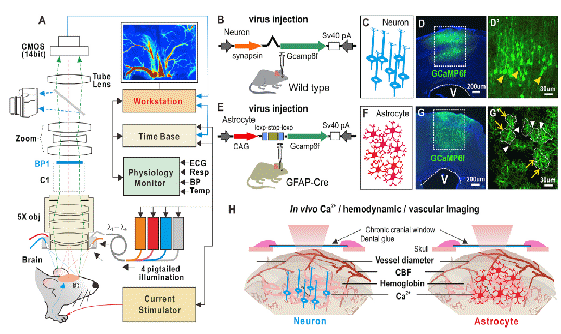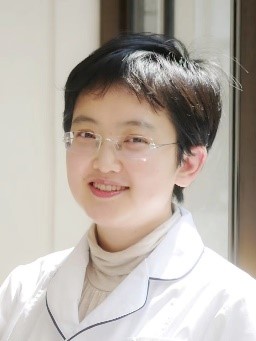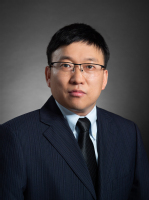On June 26, 2018, Cell Reports published the article “Synchronized Astrocytic Ca2+ Responses in Neurovascular Coupling during Somatosensory Stimulation and for the Resting State” online by Dr. Gu Xiaochun. The study mainly used various advanced Ca2+ imaging and vascular imaging techniques (including two-photon and multi-spectrum in-vivo imaging) to study the different functions of nerve cells and glial cells in neurovascular coupling. It provides potentially more accurate diagnostic and therapeutic tools for neurovascular related diseases.
Neurovascular abnormalities play an important role in various common neuropsychiatric diseases, such as obvious neurovascular abnormalities in senile dementia and stroke and other diseases, but the current synchronous imaging methods for nerves and blood vessels are still very lack. On the basis of previous research, the research group integrated two-photon imaging, GCaMP imaging (neuron), blood oxygen imaging, laser speckle imaging (blood flow) and other imaging methods, and built multi-mode optics for neurovascular synchronous imaging. The imaging system, which synchronizes imaging on animal models for up to two months, provides a powerful tool for long-term synchronized imaging of neurovascular vessels. The results of the study are published in NeuroImage (NeuroImage 165 (2018) 251–264). Based on this, the project team further used genetic modification technology to separate neurons from glial cells, studied the different roles of nerve cells and glial cells in neurovascular coupling, and discovered new features of glial cells in neurovascular coupling. The function, at the same time, demonstrated for the first time that the low frequency oscillations present in the brain originate primarily from neurons rather than from glial cells (Cell Reports 23 (2018) 3878–3890).
The research was done in collaboration with Prof. Pan Yingtian from the State University of New York at Stony Brook. It was funded by NIH, the National 973 Program, the National Natural Science Foundation, and Central Universities' research funding.





